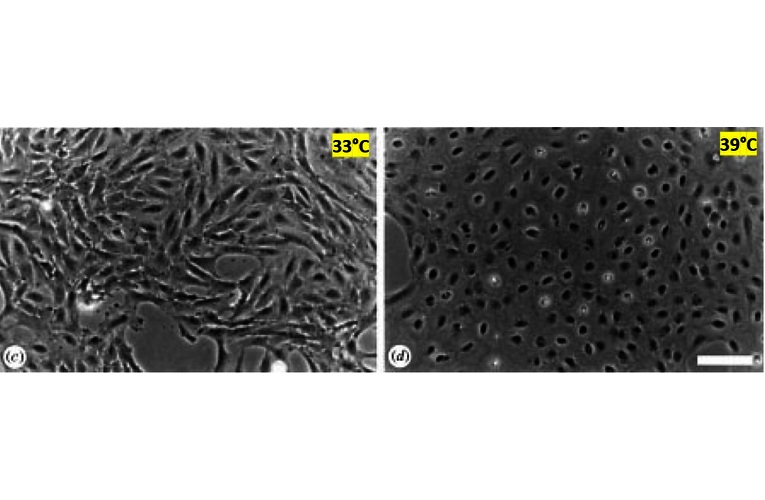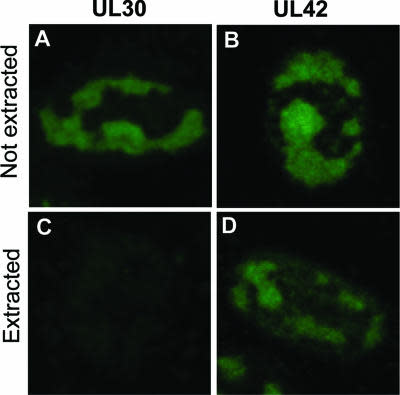Cat. #153623
UB-OC2 Cell Line
Cat. #: 153623
Sub-type: Continuous
Unit size: 1x10^6 cells / vial
Availability: 3-5 days
Organism: Mouse
Tissue: Developing organs of Corti
Disease: Hearing loss
Model: Conditionally immortalised
£575.00
This fee is applicable only for non-profit organisations. If you are a for-profit organisation or a researcher working on commercially-sponsored academic research, you will need to contact our licensing team for a commercial use license.
Contributor
Inventor: Matthew C Holley
Institute: University of Bristol; University of Sheffield
Primary Citation: Rivolta et al. 1998. Proc Biol Sci. 265(1406):1595-603. PMID: 9753783
Tool Details
*FOR RESEARCH USE ONLY
- Name: UB-OC2 Cell Line
- Alternate name: Organ of Corti cell line number 2; UB/OC-2
- Tool sub type: Continuous
- Parental cell: Primary cultures of the developing organs of Corti of E13 embryonic Immortomouseâ?
- Organism: Mouse
- Tissue: Developing organs of Corti
- Disease: Hearing loss
- Model: Conditionally immortalised
- Conditional: Yes
- Conditional description: Proliferating cultures at 33°C in the presence of Î?IF and differentiating cultures at 39°C in the absence of Î?IF due to the temperature sensitivity of the immortalizing gene regulated by a Î?-interferoninducible promoter
- Description: A conditionally immortal cell line derived from the mouse cochlea. The immortalizing gene was activated in organotypic cultures of auditory sensory epithelia at E13, the thirteenth day of embryonic development, before the hair cells had started to differentiate after their last mitoses. The cell line expresses characteristic hair cell markers including the transcription factor Brn3.1, the a9 subunit of the acetylcholine receptor, the stereociliary protein fimbrin and the myosins VI and VIIA. UB/OC-2 cells have higher expression of Brn3.1, the a9AChR and myosin VIIa compared with UB/OC-1 at 33°C suggests that the former may have been immortalized at a later stage of differentiation and therefore represent committed hair cell precursors. This means that UB/OC-2 can be used specifically to study hair cell development at an early stage. At this stage they do not display the hair cell phenotype (cuticular plate, stereocilia, polarised organisation, etc.), but do express proteins specific to the hair cell transduction apparatus
- Application: Inner ear development studies; Gene expression and functional studies of inner ear-specific genes; In vitro screening for gene activation and promoter analysis; Ototoxicity studies (prescribed drugs and agents that ameliorate their affects); Functional studies of inherited deafness mutations; Functional analysis of ion channels, receptors, and signalling pathways in vitro
- Production details: Cells derived from C57/Bl6 mice carrying a stable insertion of the conditional immortalising gene H-2Kb-tsA58, which describes a temperature-sensitive variant of the SV40 immortalising gene that encodes the large tumour antigen under the control of the Î?âinterferon-sensitive MHC Class 1 promoter. The transgenic mouse is called the Immortomouseâ? (Jat et al 1991 Proc. Nat. Acad. Sci. USA 88, 5096-5100)
- Biosafety level: 1
- Cellosaurus id: CVCL_D790
Applications
- Application: Inner ear development studies; Gene expression and functional studies of inner ear-specific genes; In vitro screening for gene activation and promoter analysis; Ototoxicity studies (prescribed drugs and agents that ameliorate their affects); Functional studies of inherited deafness mutations; Functional analysis of ion channels, receptors, and signalling pathways in vitro
Handling
- Format: Frozen
- Volume: 1 ml
- Passage number: Passage 22
- Growth medium: MEM with 10% FCS, 50Units/ml y-IFN, L-glutamine
- Temperature: 33° C
- Atmosphere: 5% CO2
- Unit size: 1x10^6 cells / vial
- Shipping conditions: Dry ice
- Storage medium: Pure Foetal Calf serum with 10% DMSO
- Storage conditions: Store in LN2 after a short period at -80° C
- Mycoplasma free: Yes
References
- Fritzsche et. al. Int J Mol Sci. 2022 May 21, 23(10):5780. PMID: 35628594
- Clough et al. 2004. Biochem Biophys Res Commun. 324(1):372-81. PMID: 15465029
- Jagger et al. 2000. J Physiol. 527(Pt 1):49-54. PMID: 10944169
- Jagger et al. 1999. Pflugers Arch. 438(1):8-14. PMID: 10370081
- Rivolta et al. 1998. Proc Biol Sci. 265(1406):1595-603. PMID: 9753783







